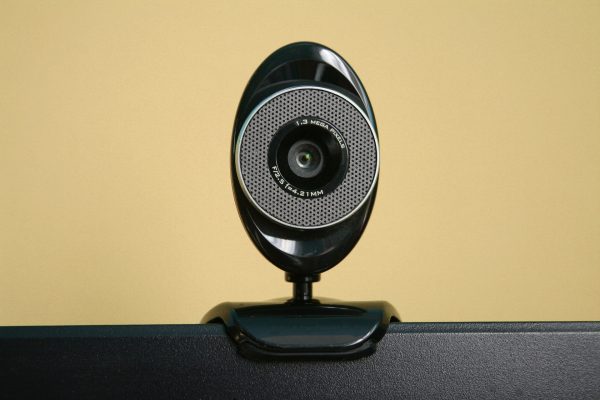Original August 4, 2020
Revised January 16, March 11, April 29, 2021
Dear Colleagues,
If you’re thinking about returning to in-person work, or have already done so, we hope you will find these ideas helpful. This is a long document, so here are the key areas:
- Maintaining uncertainty
- Different practices & risk tolerances lead to different decisions
- Not shaming those who work differently
- Beliefs about online vs. in-person work influence our risk assessment
- Wishes and fears about resuming in-person work
- Child work
- Transference
- The new normal may require being more directive
- A hybrid model for working in-person, online, and the phone.
Dan Prezant, Acting Co-Chair
David Scharff, Co-Chair
APsaA Covid-19 Advisory Team
Opening Day?
Returning to In-Person Treatment During COVID-19 – If, When, and How
Given that some analysts and therapists have returned to in-person work with some (or all) of their patients, many are considering doing so, and some have decided not to, the APsaA COVID-19 Advisory Team and the APsaA Reopening Task Force are sharing thoughts on in-person work. Our goals are to encourage thoughtful analytic approaches and not shame anyone for how they work.
Changing from working in-person to working via video or phone was difficult. Having to do it overnight, with little or no preparation, made it even harder. However, it was a crisis, so we rose to the challenge and adapted. Most of us defended against the harsh reality of COVID-19 by thinking it wouldn’t last long. Once the terrifying sprint became a depressing marathon, the question became: When can we get back to normal? Now that we’re getting vaccinated, the question is: Are we done? Only you can answer that question for your practice.
Tension exists between those who recommend not making any significant changes in COVID precautions post vaccination vs. those who recommend that post vaccination life can almost go back to normal. Some feel that the push to relax precautions is driven by a desire to motivate vaccination acceptance. After all, why go through the difficulties of finding and getting vaccines if they don’t change what we can do? Some of us, who typically follow trusted sources, find themselves questioning the CDC or NYT because of past mistakes, miscommunications, contradictory advice, economic and political influences, and/or our resistance to change.
We are NOT taking a position on whether you should work in-person. Nor are we making a statement about how you should work in-person if you choose to do so. Our ideas are not best practices or mandatory guidelines for everyone to thoughtlessly follow.
We ARE taking a position that maintaining an attitude of uncertainty is good. Being certain that you can never return to the office or that being fully vaccinated is all you need may be different ways of avoiding the same complicated problems and feelings. We recommend remaining curious and tolerant of not knowing the “right” thing to do. Part of living with uncertainty is letting yourself change how you work as the situation and/or your feelings change.
Shaming those who go back to in-person work or those who remain online may be ways of creating certainty and/or enemies. However, hubris sacrifices the analytic principle of recognizing what we don’t know while we seek to know. Respecting those who work differently during COVID may help us question our decisions and be open to change.
Every practice is unique. It is not possible to offer a one size fits all solution. So much is in flux. How you work depends on your risk tolerance, how necessary you think in-person work is, how effective you think online/phone work is, how directive you feel comfortable being with your patients, if you work with kids, very disturbed patients, inpatients, do testing, the underlying health risks of your patients and their families, the underlying health risks of you and your family, if you have staff in your office, if you share your office, if you’re in a suite or single office, the physical nature of your office, the local climate if you plan on leaving your windows open, whether your patients will typically be waiting for their session while sitting in their car or standing on the street, the local viral incidence, local vaccination rates, local prevalence of anti-maskers and anti-vaxxers, how concerned you are about COVID variants, long haul effects, and the strength of post vaccination immunity, and insurance reimbursements for tele-treatments.
Many of us struggle with wishes to and fears of returning to a pre COVID-19 world. Part of us wants to get back to normal. We have anniversary reactions and battle fatigue over cumulative trauma. We want to stop living in fear and in isolation. Part of us fears disease risks (variants, length and strength of post vaccination immunity, breakthrough infections, long haul effects), our own phobic feelings, the now foreign feeling of being in our office with patients, intense feelings that can come with a shift to in-person meetings, and discomfort showing our heavier bodies (did you gain 19 lbs. during COVID-19?).
Some of us find working from home with partners, kids, and pets around surprisingly comfortable. Some find it quite uncomfortable. Some enjoy the extra family time and lack of commuting. Others long for the separation between their work and family lives. For some being home and taking care of kids, chores, errands, exercise (that used to have to wait until after hours) is a benefit and for some it’s an onerous demand. Some have given up their offices for financial, health, or other reasons.
Many therapists and patients prefer in-person work and believe it is the most effective. Those who feel strongly that online/phone work is not effective will understandably feel a greater need to return to the office. Many analysts and patients have found that online/phone work is different, at times better, at times worse, but still quite effective. Understandably, they will feel less of a need to return to the office. These beliefs likely influence your assessment of the risks.
Seeing patients in-person or via telehealth is an important decision with powerful ramifications on the physical and psychological health of our patients, their families, their coworkers, and ourselves. Insurance reimbursement is important to many of us and to our patients, but it shouldn’t be part of this equation. Thus, state and federal rules and regulations should permanently require equal insurance reimbursement for telehealth. Unfortunately, this is not yet the case.
Most of us who reopen will do so in stages, starting with patients who we trust are vaccinated and safe. It’s unlikely there will be one opening day in which everyone comes in. This may help us, and our patients adjust to in-person work. Seeing patients in-person may be a new normal, but it won’t be the same as going back to the old normal. Please consider:
- Psychological Factors:
- To be an effectivetherapist you need to be comfortablewith how you work, whether in telehealth or in-person. If you’re too anxious to think, then you can’t help your patients. If in-person work replaces your free-floating attention to the patient with anxiety, anger, or guilt about spreading and/or catching COVID-19 it may be best to wait.
- Creating and maintaining a safespacewhere the patient feels as free as possible to express their innermost thoughts, feelings, wishes, fears, and fantasies is fundamental to our work. Working in-person may inhibit some patients from being open about their vaccination status, risky behavior, COVID type symptoms, and/or wishes to hurt us. We may fear that patients will consciously or unconsciously not tell us information that might affect our safety. Alternately, working online may inhibit some patients from being open about their fears that we are sick, don’t want to see them, and/or their wishes to hurt us.
- In-person work during COVID may require us to be muchmoredirective. It’s true, we’re directive online (during COVID) and in-person (pre-COVID) about where we meet, appointments, bills, etc. However, in-person work during COVID may entail an unusual level of directiveness. Depending on what you think is necessary for in-person safety, you may need to tell patients they have to be vaccinated, show you their vaccination cards, wait outside and not use your waiting room, not have anyone wait for them in your waiting room, not use your bathroom, take their temperature, wear masks in the building, waiting room, and/or in the office, not come to the office when they have COVID symptoms, travel, or engage in risky behavior, and/or participate in contact tracing in which you might have to give their contact info to the local health department.
- Being so directive impactsthe expression and exploration of the transferenceand countertransference. It may put us in the role of a parent, doctor, or teacher instructing and judging the patient. This tends to limit the transference and its exploration.
- Patient’s fears and/or wishes of hurting and/or being hurt by us, our family, and/or our other patients can best be explored when they are fantasiesinstead of realities. In the COVID-19 world, telehealth may prevent these fantasies from becoming realities and thus help us work on the transference. In-person work may create so much fear about reality that it becomes too difficult to explore the fantasy. Alternately, being online can limit the transference and countertransference. If there’s no possibility of actualizing wishes to kiss or kick, so to speak, it can deaden the therapy.
- Reopening the office in stages may help us be safe. However, it may also amplify siblingtransferencesabout which patients are your favorites.
- Kidsmay be the most in need of in-person work. Some of us feel it’s not possible to work online with very young kids or that if you do so you have to change the way you work with them (for example, involving the parents more directly in the session). However, kids are not vaccinated and likely won’t be eligible for quite some time. Kids also tend to be very physical in sessions which greatly increases the analyst’s or therapist’s exposure. Kids are brought to sessions. They often need their parent or nanny to stay in the waiting room in case they run out, need to leave early, or need help in the bathroom. Kids get sick frequently and come to sessions with symptoms that are similar to COVID symptoms. Young kids have trouble blowing their nose, wiping, and washing which also increases our exposure.
- Many of us have concerns about our practices which will likely affect our assessment of the risks and our comfort working in-person or online. We may fearlosingcurrent patientswho want, demand, or need to be seen in-person. We may have concerns about getting new patients if we can’t see them in-person.
- Many of us have concerns about insurance not reimbursing, reducing the reimbursement, or requiring us to use their platform for telehealth.
- Some feel it’s not possible to do psychological testingonline.
- Those who practice in areas or with patients who don’tbelievein vaccines, masks, and/orphysical distancing face added risks working in-person. They may also find it more challenging to remain neutral or not get into arguments about reality.
- If you’re working in-person with vaccinated patients, is it discriminatoryto not meet in-person with patients who are too young to be vaccinated or say they can’t get vaccinated because of medical or religious reasons? Given that we have to feel safe to be therapeutic, how do we work with someone who’s not vaccinated?
- In-person work may model denialand risk-taking behavior for our patients. Online work may model phobic and risk-averse behavior. Whichever way you work, it’s important to explore what it means to the patient so that we don’t promote a defensive not knowing.
- Depending on what you think is necessary for in-person safety is it more or less therapeuticto meet in-person with safety conditions (for example, checking vaccination cards, wearing masks, closing your waiting room) or to meet online without those conditions. Each approach will likely affect the work in different ways.
- Avoidthe temptation of giving a patientwho you think isn’t safe (unvaccinated, symptomatic, risky behavior) the choice of how they want to meet. This may appear to be empowering, but it may also be a way of denying our ultimate responsibility for the safety of the patient, their family, our other patients, and ourselves. Giving this type of patient a choice may be a way of protecting us from our guilt, but it shifts the guilt onto the patient. We shouldn’t ask patients to make decisions for the safety of our other patients of for our safety and that of our family. It should be your decision, not the patient’s. Again, this requires us being directive.
- Going back to in-person work when there is a chance of returning to telehealthwork because someone gets COVID and/or there’s an increased positivity rate in your community decreases the stability inherent in the structure of regular appointments. Alternately, not going back to in-person work because of these possibilities will have meaning for your patients.
- Consider that the patients who may needin-person work the most because they easily feel abandoned and/or tend to need to see us as a check against their destabilizing fantasies about our hostility toward them are also the patients who may be most negatively impactedby our safety procedures (i.e., requiring vaccines, masks, symptom checks).
- If you reopen, how will you understand and what will you do with patientswho don’twantto work in-person or only want to come to your office some of the time? How do we stay neutral and avoid making value-based decisions about what’s an “acceptable” reason (e.g., I feel sick, I might have COVID) vs an “unacceptable” reason (e.g., I’m calling because I just remembered our appointment)? Some of us may be directive and give patients rules to follow. Some may try to interpret the patient not working in-person as resistance or avoidance of the best possible treatment. Some may see it or work with it differently.
Many of us did not work on the phone or online with our patients pre-COVID. We could simply say: I don’t work that way. Most of us can no longer say that. Some of us might choose to say: now that we can meet in-person, I no longer work that way.
Should we move to a hybrid model where patients can choose in-person, online, or the phone? If you use a hybrid model, will you require patients to choose one or the other? If your patients choose to meet in-person, what will you do if one day they call or go online instead or vice a versa? Will you ask them to give you advance notice? Will your online or phone patients surprise you by showing up in-person or vice a versa? If you see patients back-to-back and use a hybrid model, how will you quickly navigate from working in-person to phone to online? How will you know whether you should go to the waiting room, turn your ringer on or off, or log into or out of your online platform? Will you be waiting for your patient to show up in-person and not notice that they are calling you or waiting for you online or vice a versa?
- Local Prevalence of COVID-19 and Vaccination Rates:
Consider the percentage of people in your local area who are testing positive and the percentage who are fully vaccinated. You can go online and get current incidence rates for your county here. Keep in mind that patients and/or their families may live or work in neighboring counties and/or travel. If your practice is in a tourist area, people may be exposed to folks from all over. If the positivity rate for your local area is less than 5% it might be safer to see patients in-person. Ideally, you may want the local incidence to be 1-3% for in-person work. These numbers can change quickly and if they go above 5% you may want to stop doing in-person work. You may want to discuss with your patients that depending on the numbers you may have to go back to only doing video and phone treatments.
III. Office Setting:
The type of office you work in may influence your comfort doing in-person work as well as your ability to accomplish the actions discussed in the next section. A freestanding private office with open windows, lots of ventilation, and its own entrance and bathroom(s) will be safer for your patients and you than an office in your home, or an office in a residential or office building which requires sharing entrances, elevators, and bathrooms. If you share your office with other therapists, work in a suite, or have office staff you may feel obliged to consider their comfort with in-person work. If you choose to close your waiting room, you may want to consider the type of transportation patients take to your office. It’s probably more comfortable to wait outside sitting in a car than standing on the street (for those who walk or take mass transit).
- Physical actions to reduce the risks of COVID-19:
The following are some conservative suggestions. You should assess the wisdom of each idea for the setting in which you practice and for your own risk tolerance.
- Wait until you are fullyvaccinatedand only see patients who are fully vaccinated. You may want to determine if it’s legally discriminatory to require vaccinations if your patient is too young to be vaccinated or objects on medical or religious grounds.
- You may want to tell your patients not to come in-person and do an online or phone session when they or the people they live with have COVID-19 like symptoms(fever, loss of smell and/or taste, breathing difficulties, fatigue). You may want to take patients’ temperature and/or do a symptom checklist upon arrival to your office. Please note that symptom screening will not help detect anyone who is asymptomatic, presymptomatic, or tends to deny or minimize their symptoms.
- Some of us think that masksare no longer necessary if you and your patient are vaccinated. Some of us still recommend masks with vaccinated patients. Some are allowing patients to unmask in session but require them to mask when they enter and exit the building, use the waiting room or bathroom. Some ask patients to have a mask handy and quickly put it on when they are about to sneeze or cough.
- You may want to continue maintaining physicaldistance with your patients. This includes when they are entering and exiting your office, lying on the couch, sitting in a chair, or playing with you.
- You may want to continue frequent handwashing.
- Therapists who have office windowsmay want to leave them open during their sessions and workday. The influx of outdoor fresh air decreases the chances of spreading COVID-19. However, it may create problems with confidentiality, street noise, and cold or hot weather.
- You may want to eliminate your waitingroom. If you maintain a waiting room, you may want to remove some of the chairs to reduce the number of people in your waiting room. Some are removing waiting room magazines, toys, and water fountains.
- Although COVID-19 transmission is believed to be airborne, some of us are still recommending that you ask patients to avoid using the bathroomin your office.
- Even though COVID-19 transmission is believed to be airborne, some of us continue to advise disinfectingdoorknobs, intercom buzzers, bathrooms, and waiting room and consultation room furniture before and after each patient. This may necessitate not seeing patients back-to-back.
- You may want to avoid physicalgreetings, such as handshakes, as a way to maintain physical distance.
- HEPAair filtration machines may reduce the risks of spreading COVID-19 by sanitizing the indoor air at a reasonable financial cost. A modern building might attempt to reduce these risks by upgrading the entire HVAC system for all the tenants. Ultraviolet light systems are usually seen as an unnecessary step beyond what is required and a cost prohibitive measure. Creating an office with negative air pressure is probably not possible and is believed to be an even more unnecessary step and even more costly than UV light.
If you use any of these devices, it’s important to consult with experts to get the right equipment for your office and waiting room. Installing a small HEPA air machine, that doesn’t perform the required number of air changes per hour, will not reduce the COVID-19 risk. Installing a proper HEPA air machine, that performs the required number of air changes per hour, will stop reducing the COVID-19 risk if it isn’t maintained. This equipment requires regular testing and service to replace filters and ensure that it’s doing the job. Keep in mind that some of these machines create noise that may interfere with you and your patient hearing each other.
- Since COVID-19 can spread in all directions – from patient to patient, from patient to us, from us to our family, from our family to us, and from us to our patients – you may feel an obligation and/or it may be required by your local public health law to participate in contacttracing. This should be discussed with your patients prior to beginning in-person treatment. You can explain that you would only give officials a list of names and contact information of who was in your office on a certain day or week. Although you would not say why anyone on the list was in your office, it does place a limit on confidentiality.
- You may want to have patients and the parents of minor patients sign an informedconsentfor in-persontreatment. It should explain the COVID-19 risks of in-person work to them and their family, the above changes in how you will be working, and the changes to confidentiality with contact tracing.
- You may want to have patients and the parents of minor patients sign an informedconsentfor onlineor phone treatment. It should explain the rationale, advantages, and disadvantages for tele-treatment.
- Follow all guidelinesfrom your subdiscipline.
- Follow all city, county, state, and federal lawsand regulations.

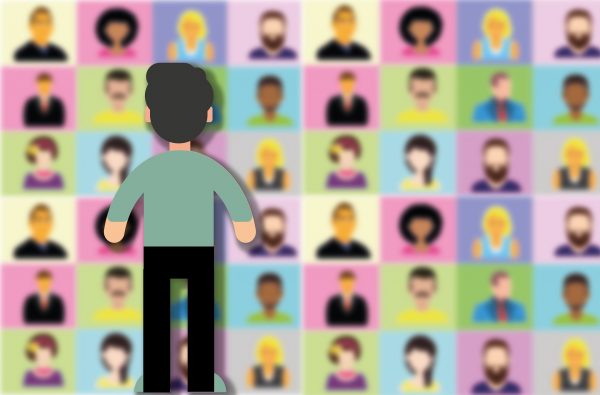
 David Scharff, M.D., is Clinical Professor of Psychiatry at the Uniformed Services University of the Health Sciences, as well as at Georgetown University. He is also Co-Founder and Former Director of the International Psychotherapy Institute; Chair of the International Psychoanalytic Association’s Committee on Family and Couple Psychoanalysis; Co-Chair, APsaA Advisory Committee on COVID-19, and editor-in-chief of Psychoanalysis and Psychotherapy in China. He directs training programs in analytic couple and family therapy in Beijing and Moscow.
David Scharff, M.D., is Clinical Professor of Psychiatry at the Uniformed Services University of the Health Sciences, as well as at Georgetown University. He is also Co-Founder and Former Director of the International Psychotherapy Institute; Chair of the International Psychoanalytic Association’s Committee on Family and Couple Psychoanalysis; Co-Chair, APsaA Advisory Committee on COVID-19, and editor-in-chief of Psychoanalysis and Psychotherapy in China. He directs training programs in analytic couple and family therapy in Beijing and Moscow.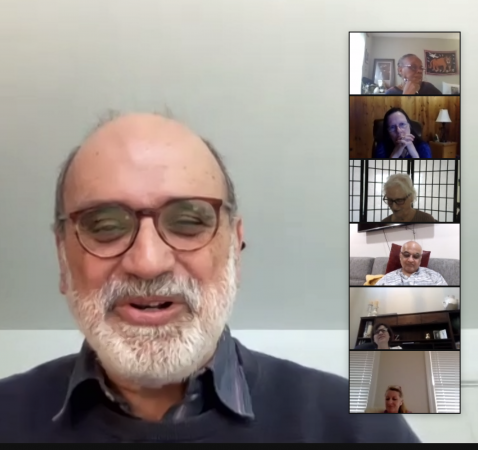
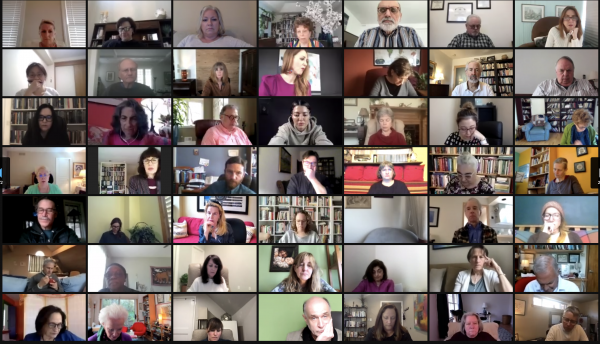
 A day after the latest shooting and tragedy in Boulder, CO I was thankful to still be home-officing because my office is only 4 blocks from that King Sooper’s Store. I used to go to the Starbucks located inside for coffee or tea. Boulder does have a small town feel to it, much like Lincoln did as well. Boulderites think of themselves as living in a bubble of peace, love, care of the environment, conscientiousness of health, and are very forward thinking. But Monday, the bubble burst as unbelievable horror visited the city of 100,000.
A day after the latest shooting and tragedy in Boulder, CO I was thankful to still be home-officing because my office is only 4 blocks from that King Sooper’s Store. I used to go to the Starbucks located inside for coffee or tea. Boulder does have a small town feel to it, much like Lincoln did as well. Boulderites think of themselves as living in a bubble of peace, love, care of the environment, conscientiousness of health, and are very forward thinking. But Monday, the bubble burst as unbelievable horror visited the city of 100,000.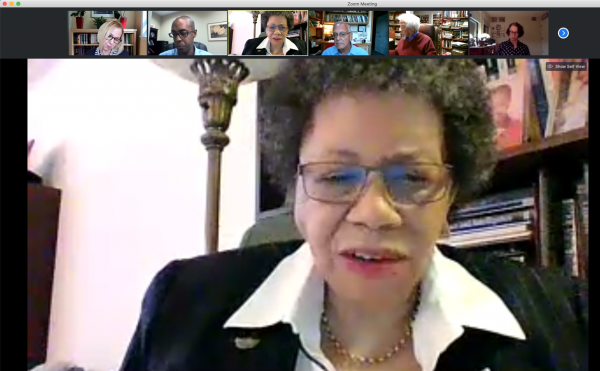
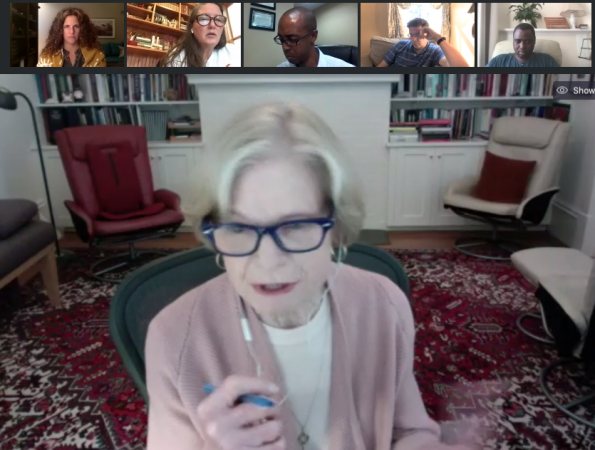
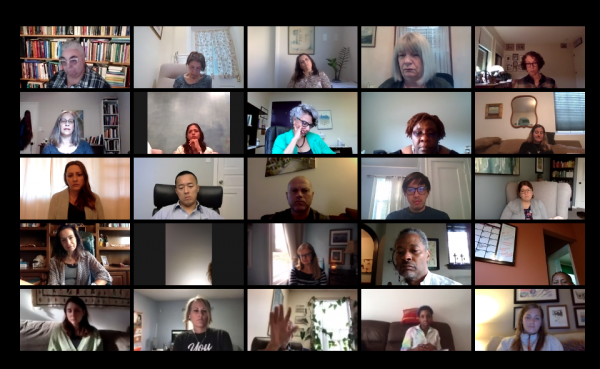
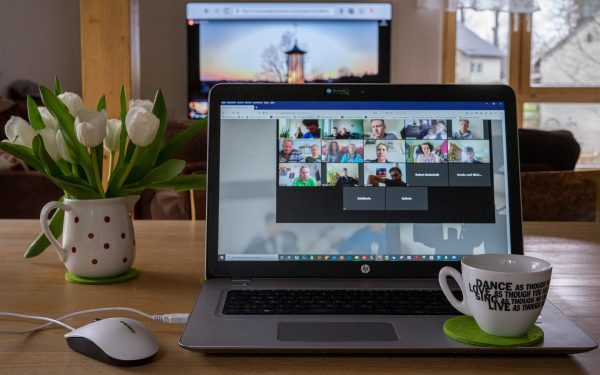
 On Sunday, the conference had its first technical glitch. The director worked feverishly but with an outward appearance of calm as she put in place an alternative gathering place. Reminded of the old days with frequent technical problems when IPI teaching was frequently interrupted on the old Polycom system, David Scharff felt that current participants now knew what he and those early classes had put with. Someone offered him “technology empathy”. Since the director and many of those leading the current day’s events had experienced those days too, they rolled with the punches. On this occasion, the host-administrator was locked out of the IPI Zoom room. She could not reach the Zoom representative to arrange for a new number. It was explained that Zoom had scheduled an update unknown to us. The director and the administrator worked together like lightning to inform 72 participants of a switch to the director’s own Zoom room number. The conference start was delayed by 15 minutes to allow everyone to log on, and the schedule was quickly adjusted in consultation with the conference co-chairs and session co-chairs. We saw a fine example of grace under pressure. The ensuing case presentation and discussion proceeded smoothly thereafter.
On Sunday, the conference had its first technical glitch. The director worked feverishly but with an outward appearance of calm as she put in place an alternative gathering place. Reminded of the old days with frequent technical problems when IPI teaching was frequently interrupted on the old Polycom system, David Scharff felt that current participants now knew what he and those early classes had put with. Someone offered him “technology empathy”. Since the director and many of those leading the current day’s events had experienced those days too, they rolled with the punches. On this occasion, the host-administrator was locked out of the IPI Zoom room. She could not reach the Zoom representative to arrange for a new number. It was explained that Zoom had scheduled an update unknown to us. The director and the administrator worked together like lightning to inform 72 participants of a switch to the director’s own Zoom room number. The conference start was delayed by 15 minutes to allow everyone to log on, and the schedule was quickly adjusted in consultation with the conference co-chairs and session co-chairs. We saw a fine example of grace under pressure. The ensuing case presentation and discussion proceeded smoothly thereafter.